Flow, Analytical & Level Instrumentation
+GF+ SIGNET Fluid Measurement Solutions That Put You In Control
Trusted worldwide for reliability and quality of manufacture, Signet products are simple to operate and provide multiple solutions for virtually all fluid processing requirements. Coupling these quality features with our Digital Connectivity, we offer a comprehensive program of engineering and customization services for creating a new level of "Smart Solutions for Automation".
Deionization - Ultra Pure Water
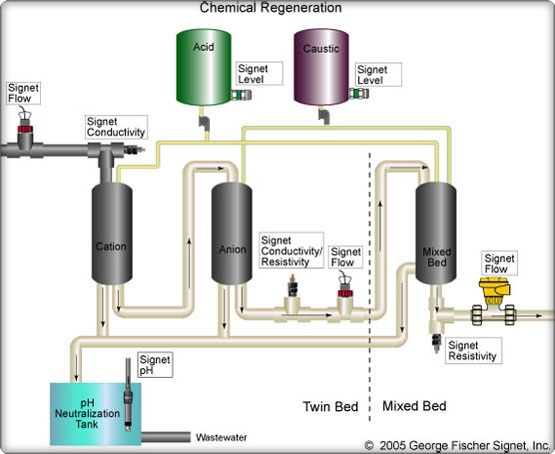
Process Description
Deionization is the process of removing minerals from water to produce pure water, which has a very low and/or nominal mineral content, or ultra pure water which is virtually mineral free. This process typically passes processed water through two separate beds, cation and anion, followed by a mixed bed. See Deionization - Twin Bed and Deionization - Mixed Bed applications for more information. The deionization process can be found in the following applications:
- Laboratory: Used for cleaning and processing samples and cleaning glassware and other instruments. Using pure water reduces the possibility of contamination; experimentation and testing with impurities in the water can interact with test samples and cause erroneous results.
- Electronics Manufacturing: Used for washing printed circuit boards and cleaning circuit board and electronic assemblies. Using pure water reduces the possibilities of minerals reacting with the metal leads which can cause corrosion and create premature failures.
- Food and Beverage: Used in the manufacturing process and as an ingredient in some bottled drinks. Also used for the preparation of food items, as well as rinse water for cleaning purposes. Also used for serialization processes and as spot free water for wash and air dry containers.
- Bottled Water: Used for the removal of minerals before the bottling process for clean tasting water.
- Metal Finishing: Used for cleaning parts and final rinse water. Also used for spot free rinsing and chemical dilution
- Medical: Deionized water is usually used as a back up to an RO system. Pure water is used for dialysis machines which require mixing of mineral free water with the dialysis solution. The medical requirements for saline and water directly introduced into the body dictate mineral free compounds since human body natural filter systems are bypassed.
- Boilers: Used for low mineral make up water to help with corrosion and scaling.
Reverse Osmosis (RO)
.jpg)
Process Description
Reverse Osmosis is a mechanical process that removes both dissolved organics and salts from water by passing water under pressure through a membrane filter. The pressurized water flows across a membrane and a portion of the water passes through the membrane (permeate) while the remaining water (concentrate) flows pass the membrane and is discharged. An RO membrane can remove up to 98% of the impurities under the proper conditions. A variety of water pretreatment may be used to extend the life of the membranes. These may include media filtration, dechlorinization, iron reduction and softening, to name a few.
Single Pass Units: Water passes through the membrane, the permeate water goes to the process and the concentrate is sent to drain
Double Pass Units: Water passes through the membrane; the permeate water goes to a second bank of RO membranes for additional filtration. The concentrate from the first bank of membranes is sent to drain while the concentrate from the second RO membrane bank is recycled through the first set of RO membranes.
Measurements in Reverse Osmosis
Flow:
- Influent: Monitors the total amount of water being processed through the membrane to track maintenance schedule for backwash and cleaning
- Permeate: Monitors the amount of permeate water from the first stage in a double RO system or the amount of water for the final process.
- Concentrate/wastewater: Tracks the amount of concentrate or brackish water being sent to drain.
Temperature: Influent water temperature has a direct effect on the rejection rate of the membrane. Lower temperatures reduce the ability of the membrane to reject minerals. Increased pressure is usually required to maintain product water levels.
Level using a pressure sensor: Monitors levels in chemical treatment plants.
Conductivity/ TDS (the membrane industry usually measure water quality in TDS (total dissolved solids))
- Measuring the feed water TDS level and comparing it to the permeate TDS level allows the operator to monitor the amount of mineral rejection the membrane. Rejection rate is an indicator of the membrane's efficiency.
- Monitors the concentrate TDS levels being sent to drain
Many end users adjust pH on the front end of the RO process to reduce the amount of pH adjustment after the process is complete.
ORP: Monitors to ensure dechlorination is effective. Manufacturers of membranes require low levels of chlorine.
Industrial Wastewater Treatment
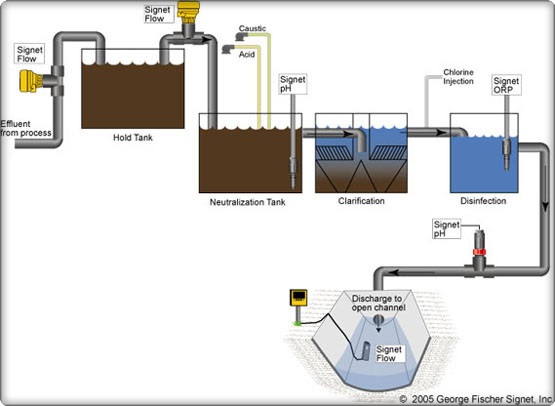
Process Description
Local water authorities require industrial wastewater discharge neutralization to protect the ecological systems in the surrounding lakes, rivers, and oceans or to protect the local sewer networks and treatment plant.
The use of acidic and caustic chemicals to neutralize the discharge is widely used because they are effective and inexpensive. The neutralization process can be complex and is different for each industrial location. A good understanding of the wastewater chemical make up, buffering capacity (alkalinity), flow rate, and sewer discharge requirements (pH, suspended solids, dissolved solids etc.) is critical in selecting the proper chemical neutralization treatment program.
It is most effective to perform the neutralization process in a tank rather than in a pipe to the final process or discharge.
The neutralization tank construction should include a pH sensor, mounted in a position that will allow the easy removal of the sensor for periodic maintenance and calibration, a mixing motor, and chemical injection pumps located opposite of the pH sensor.
Sensors that measure pH are crucial in the neutralization process, however, all pH sensors are not the same. Many neutralization processes contain materials or chemicals that can cause premature senor failure by contamination of the internal reference solution. In these cases, a more rugged sensor such as one with a differential reference, will extend the life of the sensor.
Measurements in waste water treatment:
Flow:
- Track the amount of process effluent water being treated
- Record the amount of process waste water being discharged to the sewer
pH:
- Adjust and control pH levels in the neutralization tanks as well as throughout the process
- Monitor and adjust the pH levels being discharged into the sewer system
ORP: Monitor the disinfectant ability of the chlorine injection.
Conductivity: May be used to monitor and adjust conductivity levels being discharged to the sewer to prevent high salt pollution.
Signet Product Line - Features & Benefits
 | 515, 2536
|
 | 2551
|
 | 7000, 7001
|
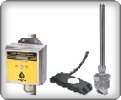 | 3300/3500
|
Conductivity/Resistivity
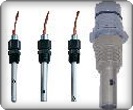 | 2819, 2820, 2821, 2839, 2840, 2841
|
 | 2850
|
pH/ORP
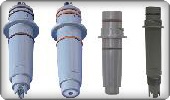 | 2714, 2716, 2754, 2756, 2774, 2776
|
2764, 2766
|
Temperature & Pressure/Level
 | 2350, 2450
|
Preamplifiers
 | 2720, 2750, 2760
|